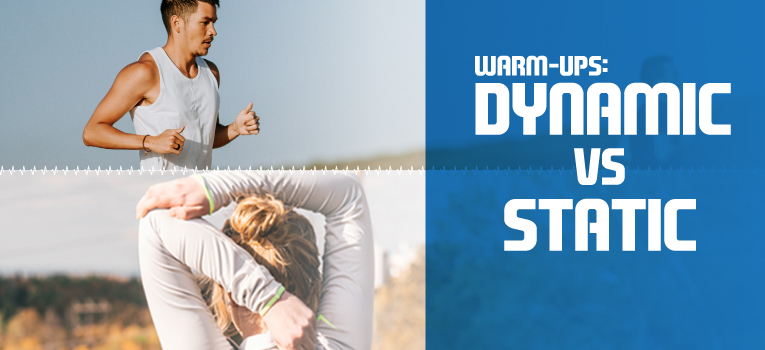By: Jensen Garcia, Fitness & Health Promotion placement student
One of the biggest mistakes in fitness is skipping warm-ups and cool downs. It is a crucial and valuable aspect in fitness where it is important to stay mobile as it affects our performance in our everyday lives and in sports performance. It is important to keep our bodies and health to the best and highest possible levels to prevent any acute or chronic injuries at any point in our lives especially at an old age. Wouldn’t you want to be injury free and healthy at an old age?
To maximize you workout it all starts with a proper warm-up at the beginning and mobility at the end. It is important to always to begin with a warm up to increase your body temperature, joint lubrication, muscle pliability, movement recognition/preparation, mind-to-muscle link, coordination, and most importantly injury prevention.
Why “DYNAMIC” vs. “STATIC”?
Dynamic Warm Up – “it is a series of sport specific movements that are designed to prepare the muscles for performance and are performed in a safe and controlled fashion.”
A dynamic warm up allows both for body temperature to increase, as well as muscle pliability through non-static movements such as butt kicks, high knees, ladder drills, etc.
This method allows the body to move and stretch through body movement, it trains the body and mind to connect to prepare the body for specific exercises during your workout.
Ex. Dynamic Warm-Up for a lower extremities workout
- Jog (50% effort)
- High Knees
- Butt Kicks
- Walking Lunges
- High Kicks
- Hip Abduction/Adduction Leg Swings
Static Warm Up – “Static stretches are deep, slow stretches, which entails a singular motion held in place for a duration of time.”
Static stretching focuses on where the body needs to be warmed up first. Actions such as running, rowing, etc. and muscles then lead by stretches through held static positions. The downfall of static stretches is the limited range of motion. Static is more beneficial at the end of workouts due to its current muscle blood flow and release of lactic acid build up and the maintenance of mobility and pliability.

Recent Comments